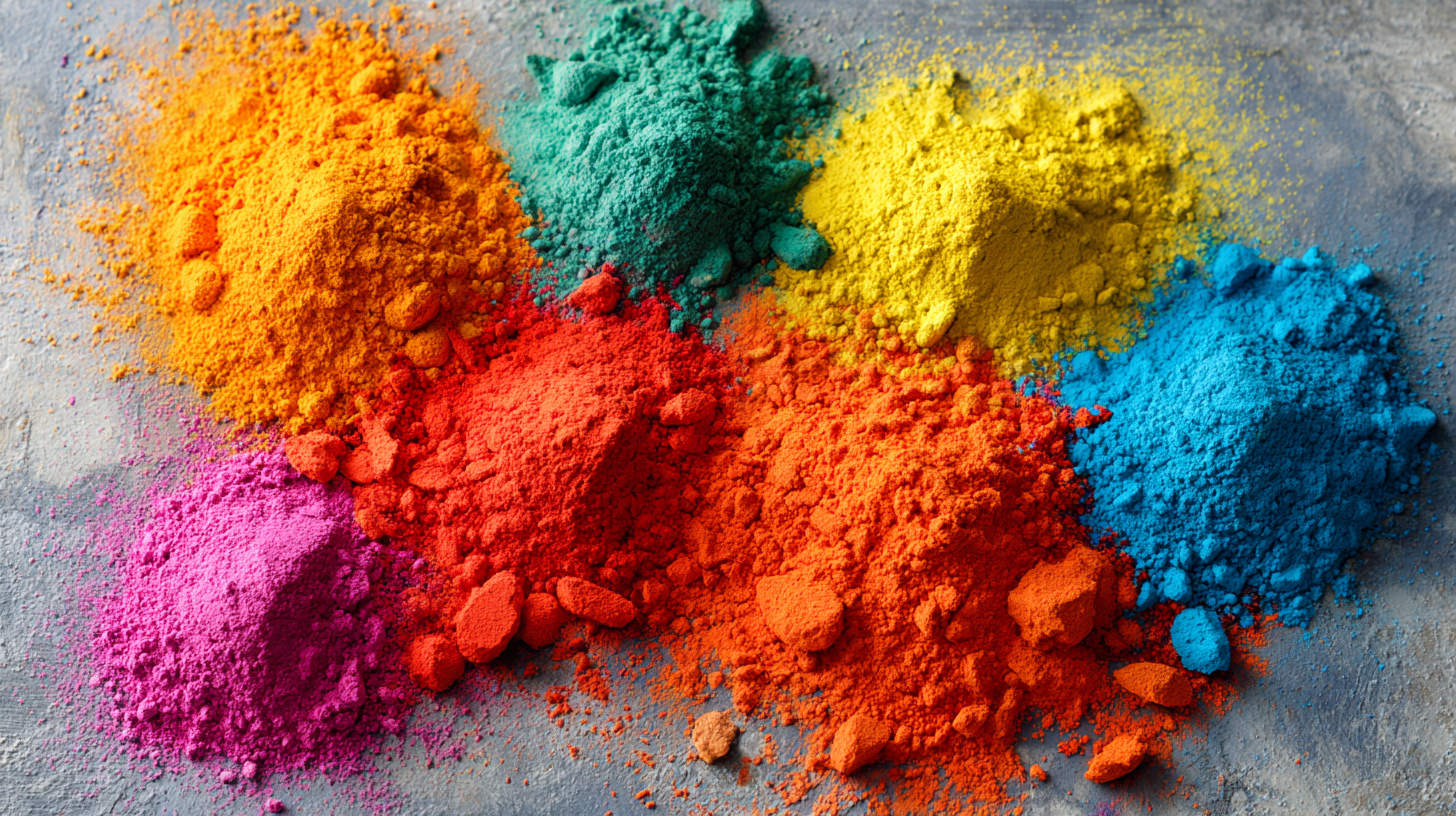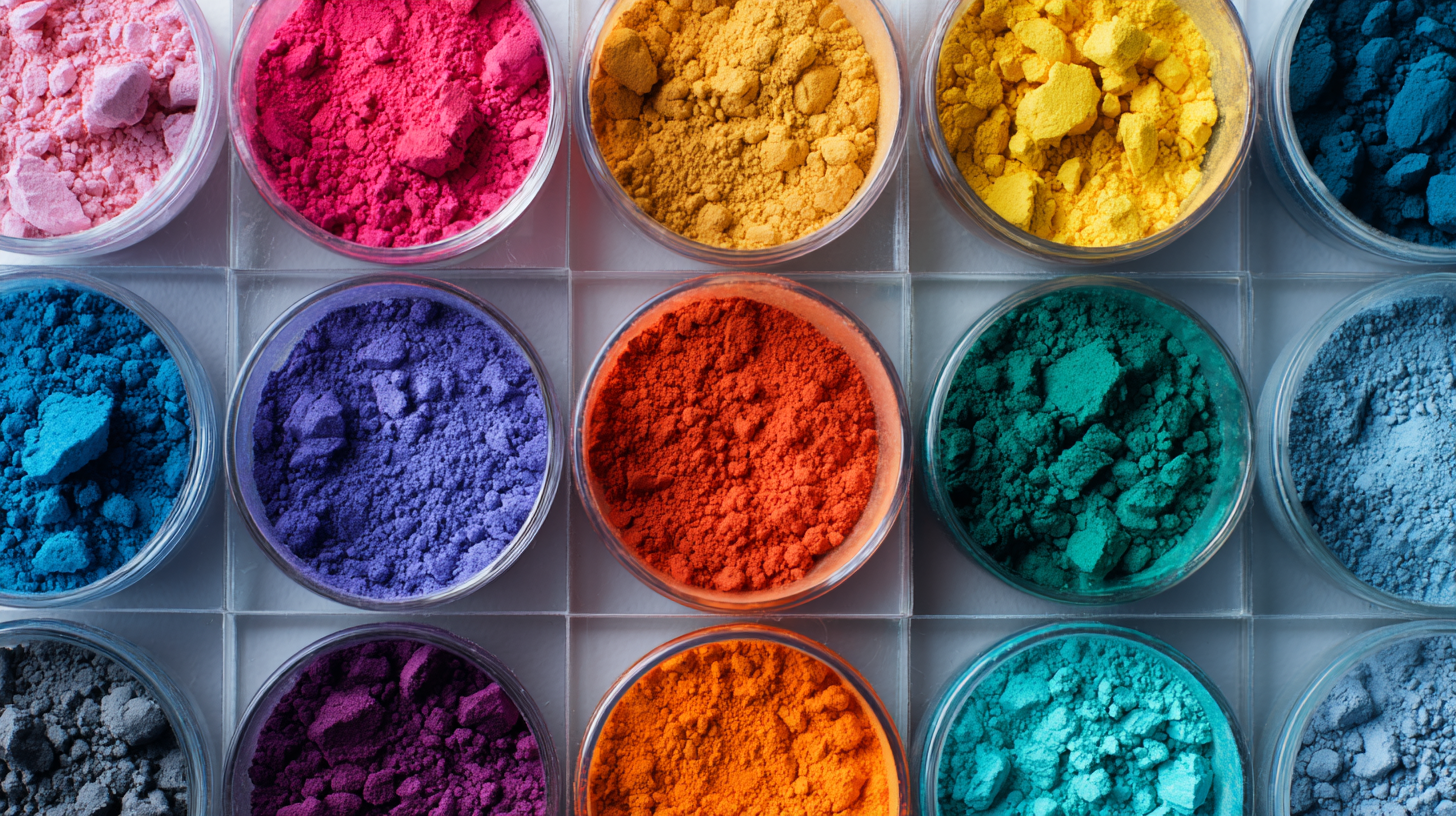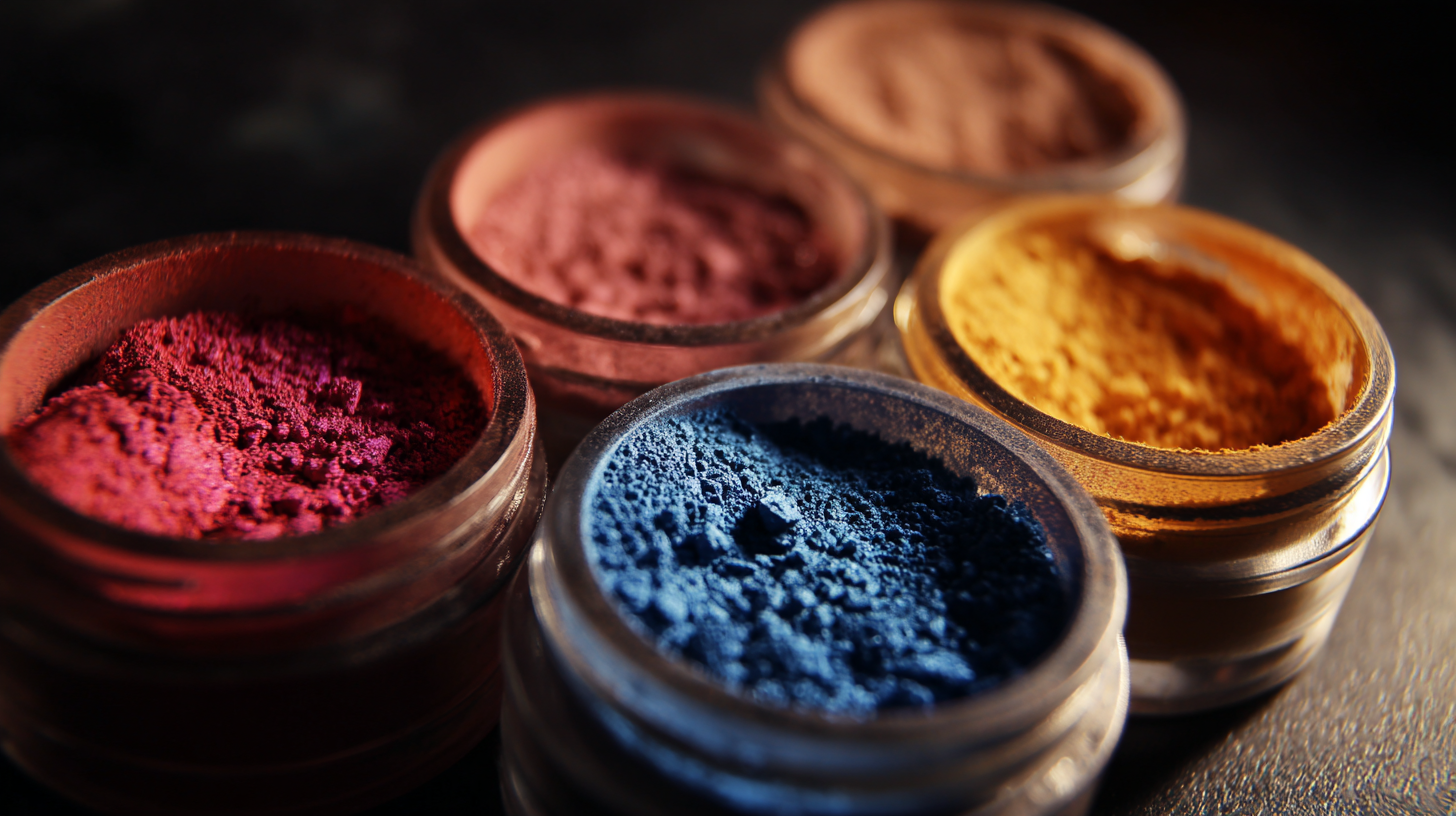In the world of artistic and industrial applications, the choice of materials can make all the difference in achieving desired effects and durability. One such material that stands out is pigment powder for resin, known for its vibrant colors and versatile applications. As creators and manufacturers seek to enhance their projects, understanding the unique characteristics of the best pigment powders becomes crucial. This blog explores the various types of pigment powders available, their physical and chemical properties, and how they interact with resin to produce stunning results.

Whether you are an artist looking to create mesmerizing art pieces or a craftsman seeking to improve product quality, this guide will provide insights into selecting the most effective pigment powder for resin to elevate your work to new heights. Join us as we delve into the fascinating world of color and creativity, unlocking the potential that lies within the best pigment powders.
When it comes to resin applications, the choice of pigment powder can significantly influence the final outcome. Pigment powders for resin are not just about adding color; they possess unique properties that enhance both aesthetic appeal and functionality. One of the most notable characteristics is their lightfastness, which ensures that the vibrant colors remain unchanged even when exposed to sunlight over extended periods. This stability is essential for outdoor projects or items that will be displayed in well-lit areas.

Additionally, the texture and particle size of pigment powders can greatly impact the way they mix and settle within the resin. Finer powders tend to provide more uniform color application, while coarser pigments can create fascinating visual effects, adding depth and intrigue to the finished piece. Moreover, certain pigments have the ability to create iridescent or metallic finishes, which can elevate a simple resin project into something truly unique. Understanding these properties empowers artists and makers to experiment and find the perfect pigment that complements their creative vision.
In the world of resin applications, the maintenance of pigment quality is paramount for achieving vibrant and long-lasting results. Cost-effective strategies for maintenance and after-sales services can significantly enhance the value of pigment powder products while building customer loyalty. By leveraging advanced technologies like artificial intelligence and the Industrial Internet of Things, manufacturers can create proactive support systems that address customer needs promptly, ensuring that users achieve optimal results with their pigments.

The implementation of streamlined after-sales services aligns closely with the evolving landscape of service marketing. By focusing on the 7P's—Product, Price, Place, Promotion, People, Process, and Physical Evidence—companies can develop a comprehensive strategy that not only promotes their pigment powders but also assures customers of continued support. This approach is essential, as aftermarket sales have become increasingly vital for manufacturers seeking to differentiate themselves in a competitive market. Creating a robust support framework not only enhances customer satisfaction but also positions brands to capitalize on emerging trends like the right to repair, driving further engagement with their products.
When choosing the best pigment powder for your resin projects, it’s essential to consider a few key factors to ensure brilliant results. First, you'll want to focus on the color intensity and opacity of the pigment. High-quality pigment powders offer vibrant colors that can transform your resin art, whether you desire a pastel finish or a bold, solid hue. Test a small amount of the pigment in a sample resin mix to evaluate how it looks when cured, as the final color can change during the curing process.
Another important aspect is the compatibility of the pigment with your chosen resin type. Some pigments may work well with epoxy resins but might not provide the same performance with polyurethane resins. It’s advisable to look for powders specifically designed for resin applications, as these will typically blend more smoothly and yield better adhesion and longevity. Additionally, consider the particle size of the pigment. Finer powders generally disperse more evenly, resulting in a flawless finish, while coarser pigments may create an interesting texture but can clump or settle if not used correctly. By keeping these factors in mind, you can select the perfect pigment powder to elevate your resin creations.
When comparing different pigment powders for resin applications, it's essential to consider their performance and versatility. Recent advancements in pigment technology have resulted in low-cost and high-chroma cobalt blue composite pigments synthesized via a CaCO3-assisted mechanochemical method. This innovative approach not only enhances color intensity but also utilizes eco-friendly kaolin tailings, showcasing a trend towards sustainable pigment production. Such developments underline the importance of selecting pigments that not only deliver vibrant colors but also align with environmental standards.
Tip: When choosing pigment powders for resin applications, focus on their thermal stability and weather resistance. Recent research indicates that pigments modified with solar reflective properties can improve durability and longevity in varying environments. For instance, studies have shown that Pr3+/Cr3+ doped BaTiO3 pigments exhibit excellent near-infrared reflectance of up to 96.39%, making them suitable for outdoor applications.
Additionally, the efficacy of metal oxide nanoparticles, like zinc and copper oxide, has been highlighted for their heat and corrosion-resistant capabilities in paint formulations. This reinforces the necessity to evaluate the physical attributes of pigment powders that contribute to their overall performance in practical applications. Understanding these characteristics can greatly enhance the selection process, ensuring optimal results in your projects.
When mixing pigment powders with resin, achieving optimal results requires careful attention to detail and a solid understanding of the materials involved. Start by selecting high-quality pigment powders that are specifically designed for use with resin. These pigments not only provide vibrant colors but also have excellent dispersion qualities, ensuring an even mix throughout your resin. Before adding the pigment, prepare your resin according to the manufacturer's instructions. This usually involves combining equal parts of resin and hardener in a clean mixing container.
Once your resin is ready, it’s time to incorporate the pigment powder. Gradually add the pigment while stirring continuously to avoid clumping. A good rule of thumb is to start with a small amount of pigment and increase it until you achieve your desired shade. Using a handheld mixer can help achieve a uniform consistency, but be careful not to introduce too many air bubbles. For enhanced depth and vibrancy, consider layering different pigment colors in your resin or using translucent pigments combined with opaque ones. Always perform a small test batch to gauge your color and texture before committing to larger pours.
